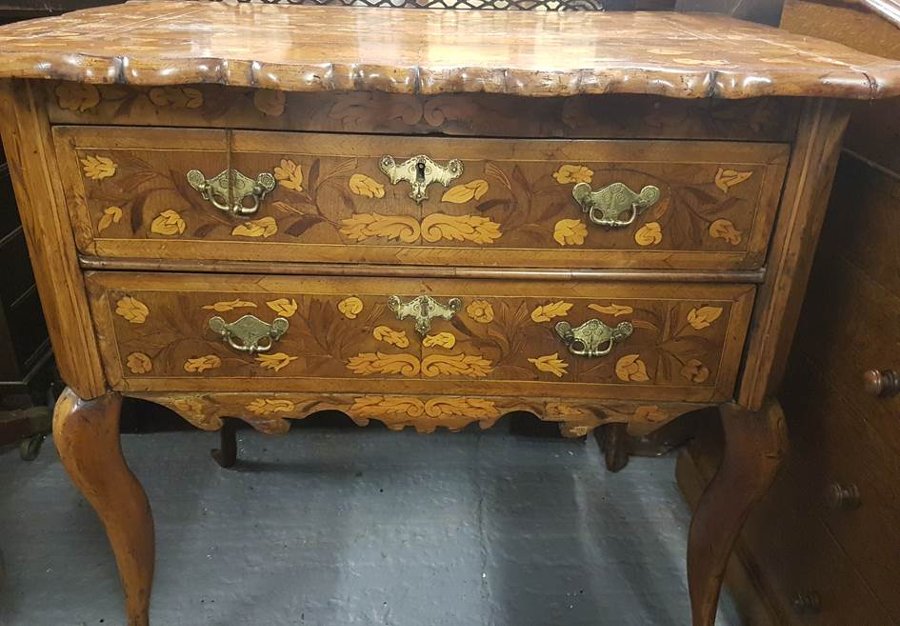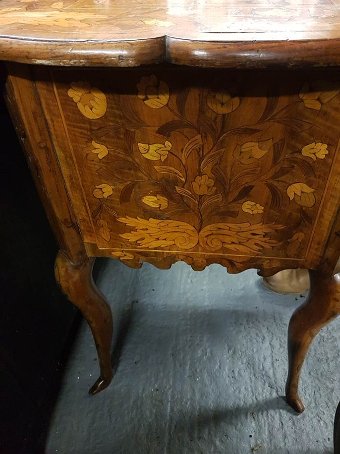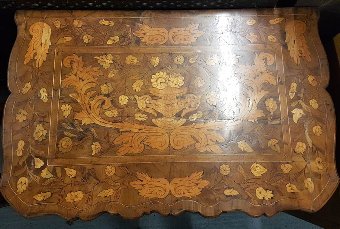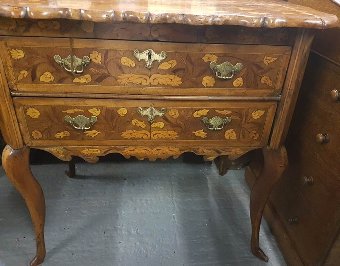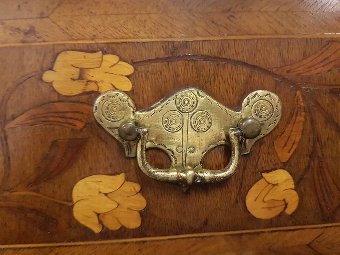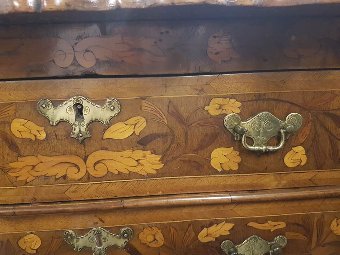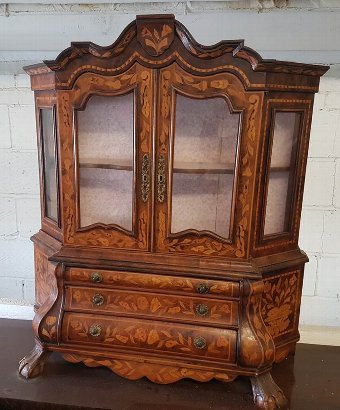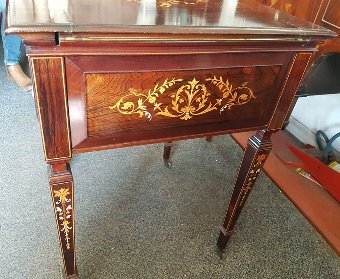18th Dutch Marquetry Chest of Drawers, circa 1780, Chest on Stand, Floral Marquetry Chest of Drawers, Antique, Vintage
UNIQUE FURNITURE
2 drawers
This is a stunning antique Dutch bombe' serpentine fronted marquetry chest of drawers, circa 1780 in date.
It has been accomplished in burr walnut with exquisite hand-cut walnut, boxwood and fruitwood floral marquetry typical of the period.
The shaped top features a fabulous bouquet of floral marquetry which highlights the beauty of this piece, and the chest is profusely inlaid with exotic birds, butterflies, acanthus leaves and floral foliage.
This exceptional piece represents a fantastic example of 18th century Dutch marquetry cabinetry at its very finest.
Marquetry
is decorative artistry where pieces of material (such as wood, mother-of-pearl, pewter, brass, silver or shell) of different colours are inserted into surface wood veneer to form intricate patterns such as scrolls or flowers.
The technique of veneered marquetry had its inspiration in 16th century, Florence. Marquetry elaborated upon florentine techniques of inlaying solid marble slabs with designs formed of fitted marbles, jaspers and semi-precious stones. This work, called opere di commessi, has Medieval parallels in Central Italian "Cosmati"-work of inlaid marble floors, altars and columns. The technique is known in English as Pietra Dura, for the "hardstones" used: onyx, jasper, cornelian, lapis lazuli and colored marbles. In Florence, the Chapel of the Medici at San Lorenzo is completely covered in a colored marble facing using this demanding jig-sawn technique.
Techniques of wood marquetry were developed in Antwerp and other Flemish centers of luxury cabinet-making during the early 16th century. The Craft was imported full-blown to France after the mid-17th century, to create furniture of unprecedented luxury being made at the royal manufactory of the Gobelins, charged with providing furnishings to decorate Versailles and the other royal residences of Louis XIV. Early masters of French marquetry were the Fleming Pierre Golle and his son-in-law, Andre´-Charles Boulle, who founded a dynasty of royal and Parisian cabinet-makers (e´be´nistes) and gave his name to a technique of marquetry employing shell and brass with pewter in arabesque or intricately foliate designs.
Width 83 cm/32.70 inch , Depth 54.5 cm/21.45 inch , Height 78 cm/30.70 inch
In excellent condition having been beautifully restored in my workshop, please see photos for confirmation.
SHIPPING:
Collection in person possible CM20.
I offer free transport within a 30 miles radius from CM20.
Mostly I offer transport almost anywhere in the UK, which is cheaper than logistics companies to ensure no damage to the furniture. Just ask me about the price, please.
I don’t want to make any extra money on that service, so for the precise shipping cost please contact me and I will do my best to find the best and the cheapest option.
Due to the size of furniture pieces, I ship mainly to the UK, however, an international shipment can be organised, after previous contact to agree the cost of this service
The furniture is carefully packed and protected against damage.
Antiques.co.uk Ref: 6EB9XAT9
- Width (cm):
- 83
- Height (cm):
- 78
- Depth (cm):
- 54.5
Price: £3,100.00
Please note that this price may NOT include delivery charges which the seller may charge extra for.
![William and Mary Walnut Bureau of Small Proportions, Drawer writing bureau, Walnut bureau, Chest of drawers, Cabinet]() £3270.00
£3270.00![Unique Antique Marquetry Dutch Mahogany Vitrine, Dutch Vitrine, Vitrine with drawers, Glass display cabinet, Glass vitrine, Dutch, Cabinet]() £2250.00
£2250.00![Drawer writing bureau, Walnut bureau, Chest of drawers, Cabinet]() £480.00
£480.00![Unique Antique Vintage Edwardian Mahogany Desk, Opening Writting Table, Secretary Writting Table, Office Desk, Patented in Great Britain]() £3250.00
£3250.00





